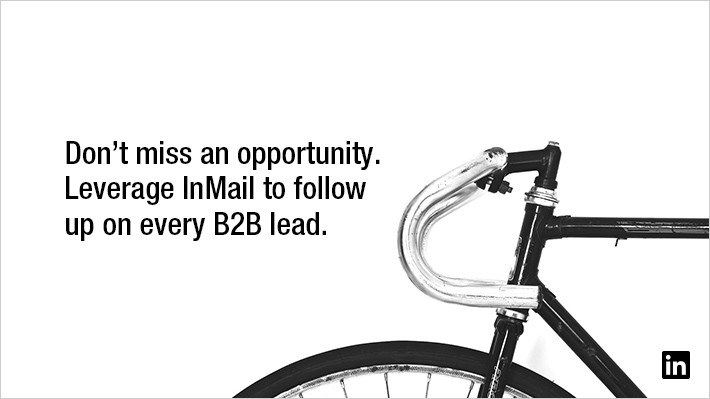3 Ways to Make InMail Sales Prospecting Work for You
There’s nothing worse than a missed opportunity in sales. When a prospect who could have truly benefited from your solution vanishes, or goes with a competitor, it feels like a punch to the gut.
But with today’s sales reps juggling so many responsibilities, and tending to so many lines in the water, this happens all too often. Sometimes we might not even notice it.
For social sellers, LinkedIn can be a lead generation machine, with more than 550 million professionals publicly engaging and networking. An active and helpful presence on the platform is critical to creating leads worth pursuing.
Savvy and strategic InMail usage is the key to ensuring you never let an opportunity disappear before you have a chance to see it through.
Why InMail is Integral to Sales Prospecting
A successful LinkedIn lead gen approach begins with targeting the right prospects. Opportunities to spark a conversation with these prospects might come in the form of an engagement on your feed or someone simply checking out your profile to learn more about you.
InMail provides a channel for one-to-one communication, enabling you to follow up directly anytime an individual expresses interest. Building a sustainable InMail process keeps missed opportunities to a minimum.
When a member is intrigued by your product or service, it’s not always obvious, which is why the signs can be easy to miss. Here’s a look at how you can identify cues for InMail outreach across three different elements of the LinkedIn experience.
LinkedIn Feed Activity
When someone posts an update or shares an article, they’re demonstrating that they care about a certain topic. Think about the last anecdote, or observation, or piece of content you published on LinkedIn. Most likely you were curious to hear the views of others or were trying to raise awareness around something. Consider this intent when browsing your feed.
When you see a post that pertains to your vertical or niche, add a comment if you can provide useful insight. If that person responds, it may be a chance to continue the dialogue directly with an InMail conversation. Similarly, when someone comments on your own updates, this could also be the impetus to send a message.
Even conversations you’re not involved in can open a window for outreach. “Hey there! I’m connected with Bill and noticed your comment on his post about CRM costs. Couldn’t help but think you might benefit from seeing this study.”
In cases where a member doesn’t necessarily look like a good fit as a lead, it still doesn’t hurt to engage when you can offer value. Who knows if there are other prospects in their organization or their circle they could put you in touch with.
LinkedIn Profile Views
When a member takes the step to research you as a seller, they usually do so for a reason. Optimizing your LinkedIn profile for selling will help you capitalize on these instances. Keeping an eye on who’s viewed your profile is another component.
Once you know who’s spent time with your profile, you can leverage that knowledge to initiate direct contact through InMail. If there’s a correlation between the date of the profile view and your feed activity, you might be able to determine what piqued their interest.
Don’t presume to know why someone wanted to learn more about you — maybe they were just bored, or thought you looked familiar — but it’s certainly valuable to keep tabs on such inbound signals, and the insights can be especially valuable when paired with others. For instance, if someone checked out your profile on the same day they shared frustrations with their current provider, that might be the ideal time to send an InMail and introduce yourself personally.
LinkedIn Hashtags
Hashtags are relatively new to LinkedIn and are helpful for discovering discussions around specific topics and niches. You can browse and follow hashtags to stay on top of the buzz surrounding your focal area, while tapping into active communities where InMail outreach might make sense.
Additionally, including relevant hashtags when you publish on LinkedIn will help others — even those who are not yet connected —find your post and potentially start a conversation.
Whether it’s feed activity, profiles, or LinkedIn hashtags, InMail is your best bet to advance a relationship and see things through with every viable prospect. Keeping this tool handy and using it at the right times will help ensure you don’t let opportunities slip away.
Looking to learn more about how InMail sales prospecting works? Download and read our latest guide, Read Me If You Want to Improve Your InMail Response Rates on LinkedIn.
Topics: Sales strategy LinkedIn InMail for Sales Sales prospecting
Related articles






